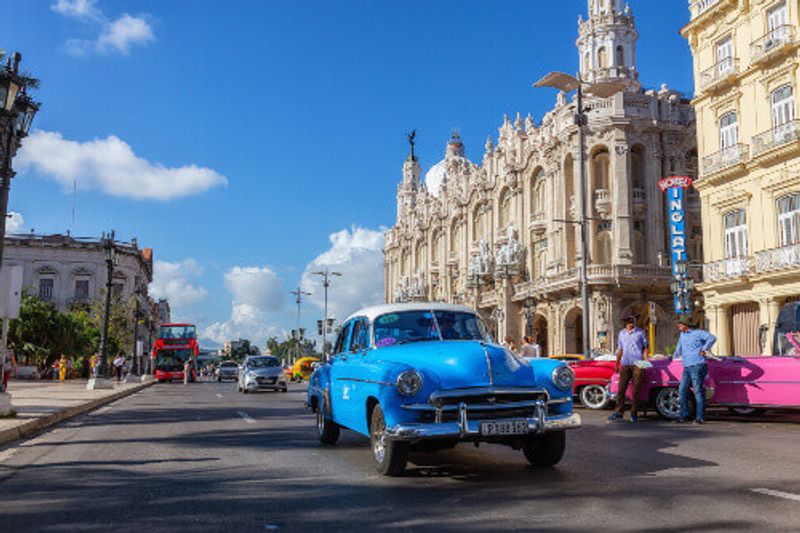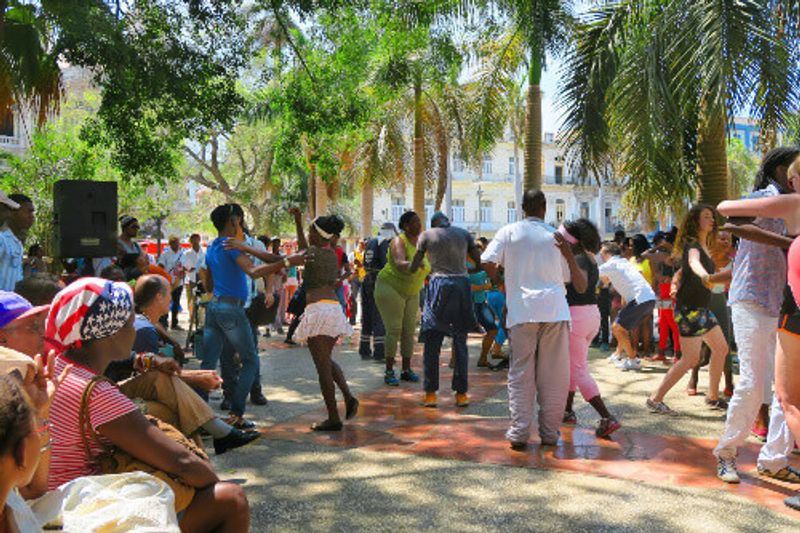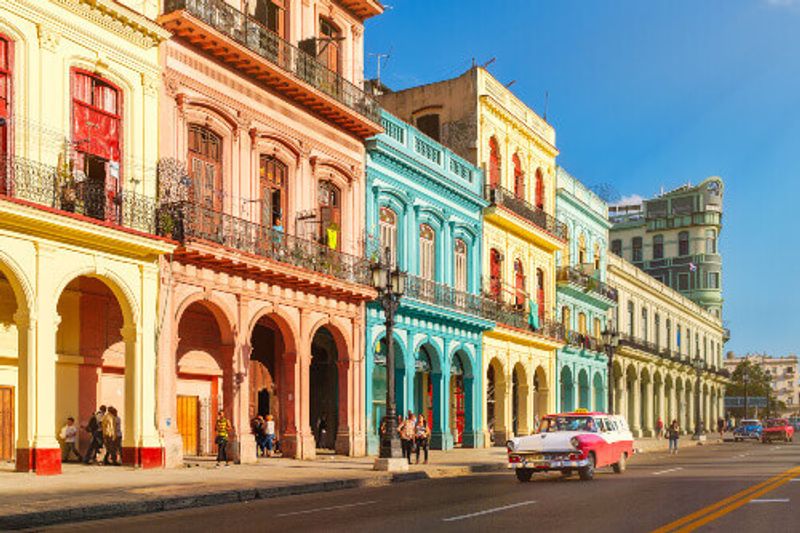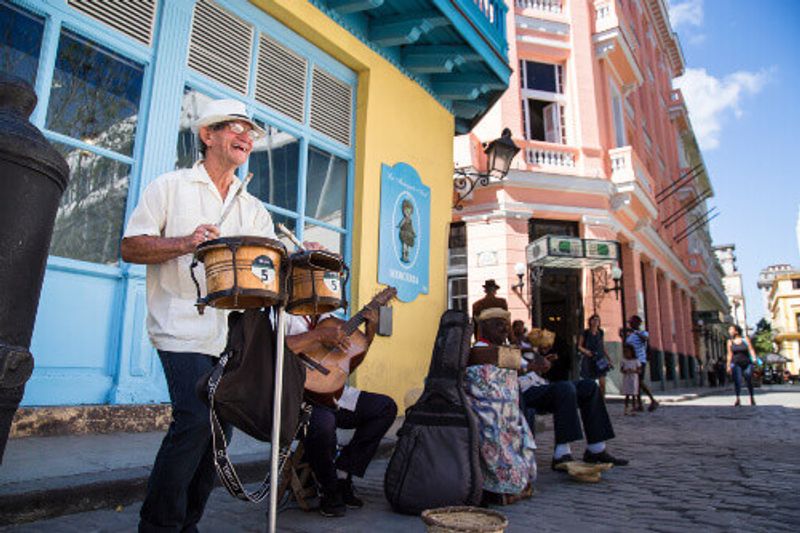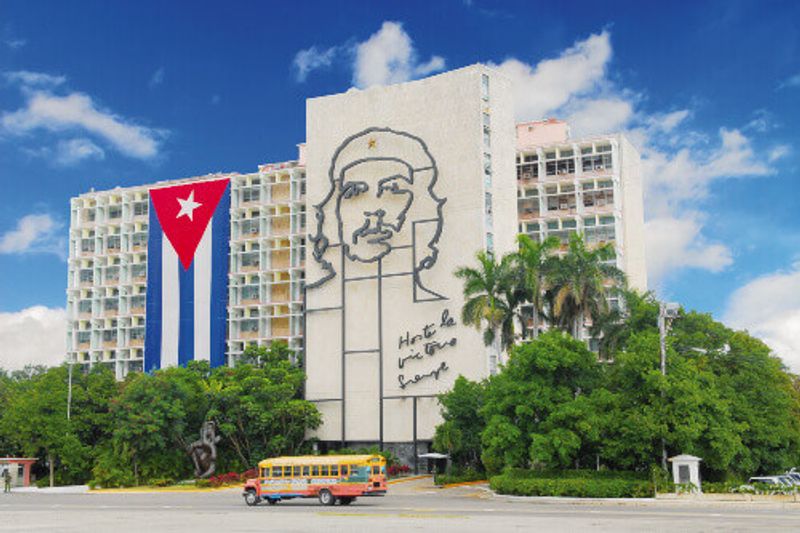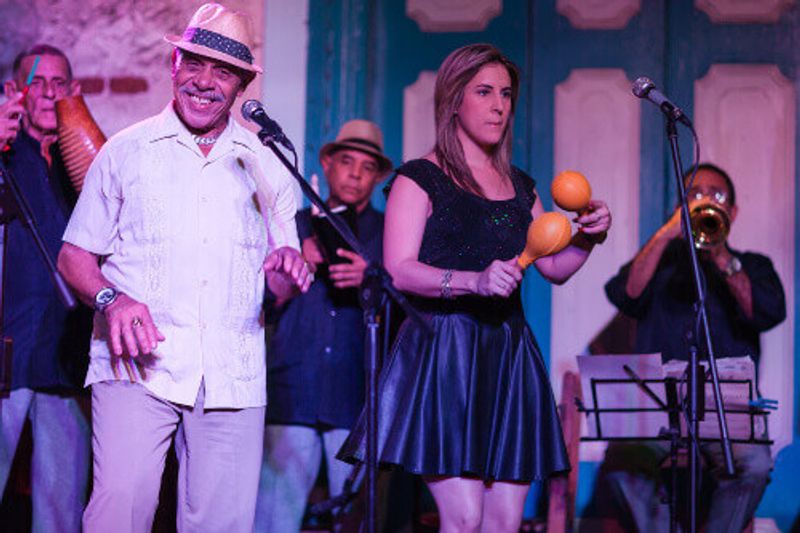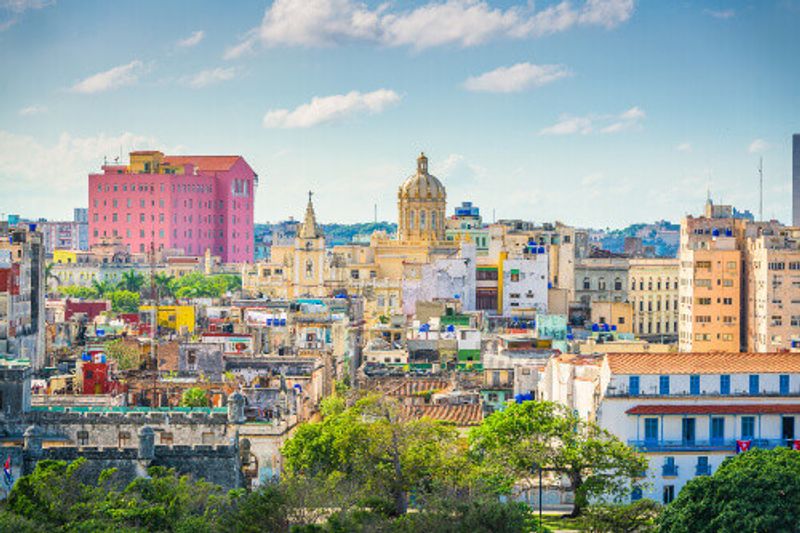Cool cafes, bohemian bars, salsa, and art—what more could a visitor want?
Salsa music echoes down the curving streets where brightly coloured colonial buildings stand proud. Thick cigar smoke wafts through from street-side cafes, with walls bleached by the Caribbean sun, visiting Havana feels like a movie set. From the outside it looks like little has changed since the 1950s—the cars, the fashion, the music, the buildings—and you’d be right. Havana has remained in something of a time capsule capturing the moment in 1959 when embargoes were launched under revolutionary leader Fidel Castro.
Prior to the Revolution, Havana had a long history of being first a staging post for Spanish conquistadors discovering the new world, and a harbour for Spanish galleons shipping plundered gold back to Europe. During the 18th and 19th century, Havana became one of the wealthiest cities in South America and during the American occupation of 1902 to 1959 entered another marvellous period of development.
Grand buildings, hotels, theatres and casinos sprang up to cater to the wealthy inhabitants and tourists who flocked there—especially during the period of American prohibition—to gamble, drink and salsa. And with the growing nightlife trade, came plenty of organised crime to supply drinks, girls and entertainment. Wealthy Havana had always attracted its fair share of swashbuckling pirates and vagabonds but in the early 20th century had garnered a reputation as something of a sin city.
The Communist Revolution put an end to all that as the casinos were shut down and private property was nationalised—Havana has remained as a living museum ever since.
The streets of Centro Habana retain the Spanish colonial architecture, with some buildings dating as far back as the 16th century beautifully restored with bright yellow, pink, and blue facades. Many other buildings have fallen into disrepair, decaying in the tropical heat.
A walk down Calle Obispo—the pedestrian street that runs right through the city and down to the coast—is alive with salsa bars, cafes, and shops and is where the Hotel Ambos Mundos, Ernest Hemingway’s home of seven years, can be found.
From here it is easy to visit Old Havana’s four historic squares: Plaza de Armas, Plaza de la Catedral, Plaza San Francisco de Asis and Plaza Vieja. A visit to the Plaza de la Revolución is not to be missed. It is here the iconic image of the face of revolutionary Che Guevara can be seen on a huge monument. Beside it is the Museum of the Revolution, housed in the magnificent former Presidential Palace building.
The city has a long history of being a creative centre and today the Fábrica de Arte Cubano, is the centre of the blossoming contemporary art scene. But it is salsa that the city is known for and Havana has dozens of clubs and cafes where guests can sharpen their dancing skills. Or get tickets to see the Buena Vista Social Club at the Havana Club Rum Museum where the grandson of one the original Club’s players keeps the tradition alive.
Another Cuban tradition is its world-famous cigars. Make sure to stop into a ramshackle cigar factory, where you can witness old men, hand-rolling cigars in smokey, old buildings using the same method they have for nearly a century.
Havana has been under Spanish, American and Soviet control in its long history, and it is undergoing another major shift as private enterprise expands, and foreign tourists return. The ubiquitous global chains have yet to appear on street corners allowing the city to retain its heritage and authenticity, but for how long it can retain its individuality will have to be seen. Now is the time to visit.
